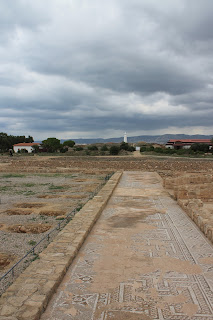Outline of the Roman army camp - the air in this remote region is so dry that even now the outline is clearly visible. From the size of the camp, historians can deduce the numbers of the besieging force, estimated at ten thousand men.
The camp followed the layout of a typical Roman encampment. It was divided into two areas by a central street, called the via principalis. At each end of this road were two gates, the porta principalis dextra and the porta principalis sinestra. Facing the enemy was the porta praetoria, and at the rear was the portadecuamana.
Quarters for the soldiers occupied about two-thirds of the area; in the other one-third stood the tents of the general, the quaestor and the tribunes, as well as open space for a forum.
On a rocky site near the western approach to Masada they constructed a massive ramp of stones and rammed earth. A giant siege tower with a battering ram was constructed and moved laboriously up the completed ramp. It succeeded in breaching the wall of the fortress in 73, allowing the Roman soldiers to enter.
The battering ram eventually took its toll on the defenses of Masada and the Romans were able to access the fortress via the breach in the wall. However, 960, of the 967, people on the top of Masada committed self–slaughter on the night prior to the Roman advance—preferring death at their own hands rather than death, rape, and enslavement at the hands of the Romans.












































































